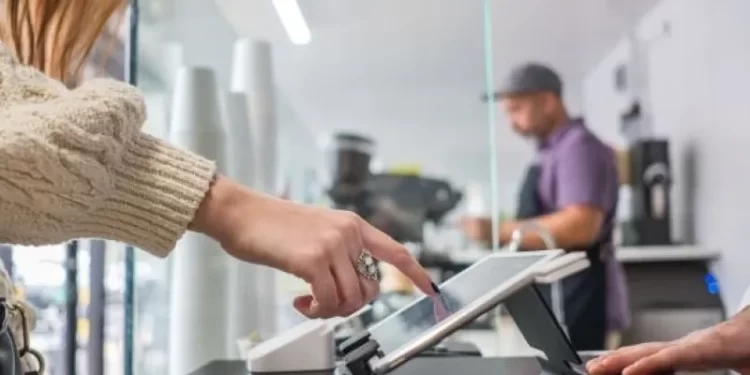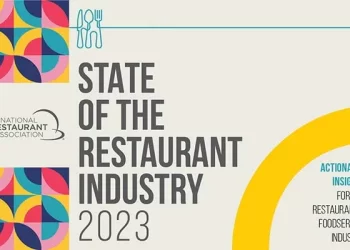
Confronted with inflationary challenges, many restaurant operators are turning to know-how and automation to assist management rising prices.
In line with new information from a Nationwide Restaurant Affiliation survey, meals prices are up 21.8%, labor is eighteen.3% extra, provides and admin prices are up 16.7%, and occupancy charges are 8.3% increased, in comparison with 2019.
To cut back skyrocketing working bills and persevering with labor points, restaurant companies are turning to robotics to tackle some repetitive duties and unlocking belongings they have already got, like course of automation and information assortment insights enabled by POS and stock administration methods.
Benefiting from present tech
“Operators are so swamped working their companies, they’re not taking the time to be taught what their POS system can do for them,” says Joe Costanzo, Sr., co-founder and proprietor, RevoltTek, Monticello, Fla., and former restaurant proprietor.
“Numerous eating places are nonetheless manually doing payroll and scheduling, however these are processes that now can simply combine into your POS system,” he explains.
Many eating places have already got their staff log in for work on the POS system. With historic information, POS methods usually can present schedule templates based mostly on the time of 12 months, employees availability, your insurance policies regarding additional time, and so forth., eliminating the paper notes from staff and handbook scheduling charts.
With the POS system already logging worker hours, it takes a easy click on to maneuver that information right into a payroll processing system, whether or not your individual or a vendor’s. The time saved by automating back-office duties means managers can spend extra time on income-generating efforts.
Streamlining buyer ordering
In line with a latest Wall Avenue Journal article, “Extra casual-dining eating places and takeout joints are allotting with direct telephone traces, opting as a substitute to divert buyer calls to voice bots…” to free staffers to prep, cook dinner and serve.
Operators cite as attracts the consistency and accuracy of AI-managed orders, the truth that they will take a number of orders concurrently, and that they routinely acquire information on orders for evaluation—one thing an worker manning a telephone is unlikely to do.
“On-line ordering could be built-in by your POS vendor too,” Costanzo says. “Clients gained’t have to attend on the telephone to put orders; they will take their time wanting over your menu, and you’ll construct in computerized upsell strategies.” Photographs integrated into on-line menus assist with the upsell.
And your on-line ordering template simply transfers to a cell platform and in-restaurant order “kiosk,” which could be so simple as a pill laptop like an iPad. All of the order information is then yours to mine.
Analysis from Deloitte reveals that 70% of shoppers choose to order utilizing self-ordering know-how fairly than ordering from a cashier, principally as a result of they will take their time deciding what they need.
Plenty of operators made their menus accessible by way of a QR code in the course of the pandemic. Take into account adopting QR codes on particular person menu gadgets too. Clients merely scan the gadgets they need on their telephones, and—as soon as personalized and accepted—their order routinely will get despatched to each the POS system and your kitchen show system (KDS) in case your system makes use of one.
Empowering prospects to order straight on-line might prevent the price of a minimum of one server.
Getting a deal with on stock
Right here once more, there are Third-party firms—or possibly your present POS vendor—who can combine your back-office stock program together with your POS system.
The mixture will enable you to monitor stock in actual time so you recognize what you could have available. You’ll be able to set triggers to let you recognize when it is advisable replenish inventory, and you’ll forecast your wants based mostly on previous gross sales, seasonality, and so forth., based on Costanza.
These packages will even allow you to join straight together with your distributors, so orders submit routinely. They usually’ll let you recognize when to make the most of provider value cuts or warn you when costs rise above a set threshold.
“Individuals suppose it’s going to be actually costly,” Costanzo says, “however a $100 per 30 days subscription might prevent $1,000 per 30 days. And a variety of methods will even assist with automating invoice cost.” All of those automations save money and time
Different stock ideas embody asking your purveyors about merchandise in oversupply that you might use to create new menu gadgets, a particular or LTO. And scrutinizing cheaper substances that might be substituted in recipes. Take into account downsizing parts as effectively, like taking a16-oz. New York strip right down to 14 oz., for instance.
Utilizing the info you could have
“Don’t get tied up in percentages,” Costanzo advises. “Your POS and back-office methods can inform you to the penny what your meals value is, however would you fairly promote a $10 merchandise with 20% meals value, or a $20 merchandise with 50% meals value?
“Have a look at profitability, not meals value. You’re producing more money to assist the enterprise, and bigger ideas in your servers. How do I promote extra of that costlier—and extra worthwhile—menu merchandise?”
Your POS information not solely reveals you what prospects are spending cash on; it additionally tells you who these prospects are. If these prospects have signed up in your loyalty program, you’ll be able to gear rewards towards upselling or transferring them to extra worthwhile gadgets, and your POS system can alert them to new rewards the second they stroll within the door.







